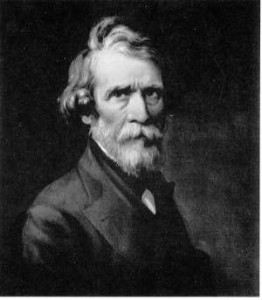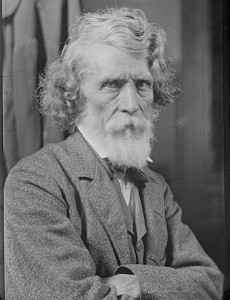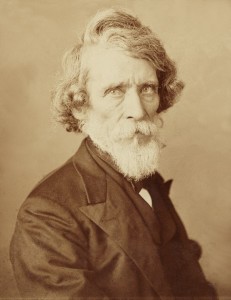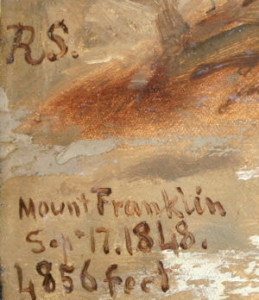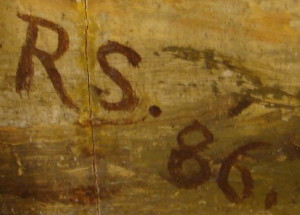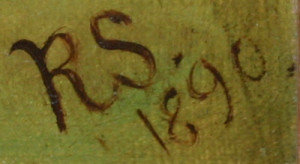Russell Smith was born in Glasgow, Scotland in 1812. At the age of four he had a bout with scarlet fever which left him deaf in one ear and a sufferer from severe headaches for the remainder of his life. He emigrated with his family to western Pennsylvania when he was seven and to Pittsburgh five years later. His only artistic training was four years with James Reid Lambdin from 1829 to 1832.
Smith became a highly successful scenic designer, scientific illustrator, and panoramic landscape painter. He excelled at dramatic vistas with atmospheric effects intending to show the grandeur of nature, but he also painted small intimate landscapes, which some persons have speculated he preferred.
He began earning money as a painter of commercial signs. For fun, he did life-size portraits of famous heroes. A trip to Europe introduced him to the work of Frenchman Claude Lorraine whose vast landscape paintings dwarfed human figures.
In 1833, he became a scenic artist for the Pittsburgh Theater and then moved to Philadelphia where he worked for six years at the Chestnut and Walnut Street theaters as a designer. He also did stage and curtain designs for the Philadelphia Academy of Music and other east-coast theaters and worked as a scientific draftsman for geological surveys in Pennsylvania and Virginia.
Smith was known to be in the White Mountains of New Hampshire in 1848, one of many trips he made to the area. Smith executed both oils and watercolors of the White Mountains and the Lakes Region of New Hampshire. These scenes were exactly documented by the artist as to location and date, leading to the conclusion that they were painted on the spot.
Married to artist Mary Priscilla Wilson, he had paintings exhibited at the Philadelphia Exposition of 1876. He established the Mary Smith prize for paintings by female artists at the Pennsylvania Academy in memory of his artist daughter. His son, Xanthus, was also a successful painter.
His biographer, Virginia E. Lewis (University of Pittsburgh Press), wrote: “He was a gentleman of distinguished interests — science, medicine, architecture and especially geology. He was employed by eminent geologists of the period to illustrate their lectures and record their expeditions. His architectural interests led eventually to his building two houses for himself. By all standards of the nineteenth century he was successful. He sold his paintings and made a good living. He stood apart and to some extent ahead of this time.”
Smith was a member of the Pennsylvania Academy of the Fine Arts and the Artist’s Fund Society.
His works are represented in the collections of the Historical Society of Pennsylvania, the Pennsylvania Academy of the Fine Arts, and the Carnegie Library.
Signatures
- 1848
- 1886
- 1890
Typical Verso Inscriptions
- Ossipee mountains & 5 mile Pond / RussellSmith
- Moose Hill. Saco RIver / RussellSmith 1850
- Jenkintown from Edgehill October 30, 1890. / Russell Smith.
References
New Hampshire Landscapes
Who Was Who in American Art
